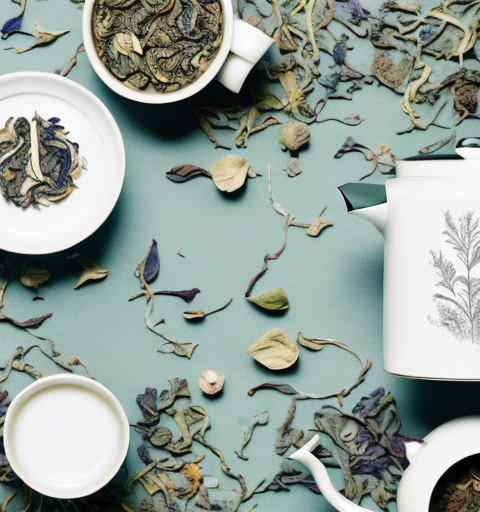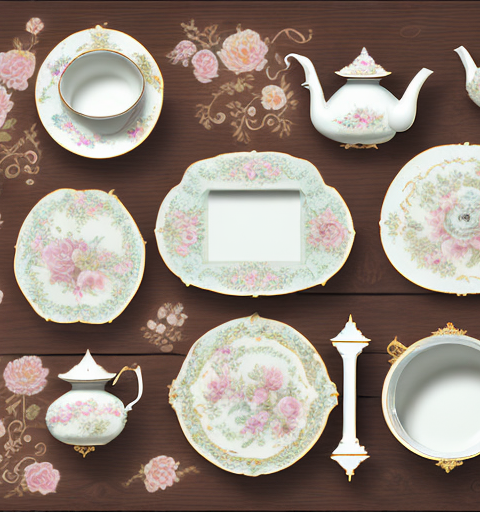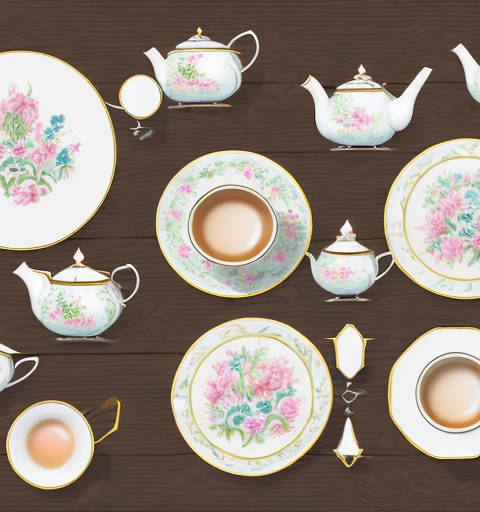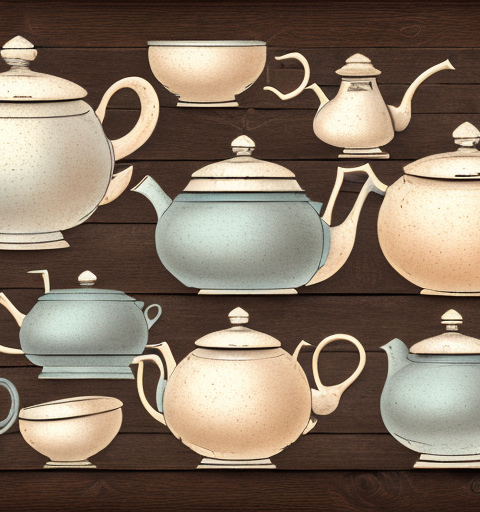If you are a tea lover, you might have encountered the issue of tea stains on your ceramic teapot with a glossy and reflective surface. The unsightly stains not only compromise the aesthetic appeal of your teapot but also make it difficult to use for brewing your favorite teas. In this article, we will delve into the causes of tea stains on ceramic teapots and explore various methods for removing them. We will also provide you with valuable tips to prevent tea stains and guide you on how to properly clean and care for your teapot to maintain its shine and luster.
Understanding the causes of tea stains on ceramic teapots
Before we dive into the solutions, it’s crucial to understand why tea stains occur on ceramic teapots. Tea leaves contain natural pigments, tannins, and oils that can seep into the porous surface of the teapot over time. When these substances come into contact with the glossy and reflective surface of the teapot, they can leave behind stubborn stains that are hard to remove. Factors such as the type of tea used, brewing temperature, and duration can also influence the intensity of the stains.
To tackle tea stains effectively, it is essential to identify the root cause and adopt appropriate cleaning methods that won’t damage the teapot’s surface.
One factor that can contribute to tea stains on ceramic teapots is the presence of hard water. Hard water contains high levels of minerals, such as calcium and magnesium, which can react with the tannins in tea and form insoluble compounds. These compounds can then adhere to the teapot’s surface, leading to stains that are difficult to remove.
In addition to hard water, the frequency of tea brewing can also impact the accumulation of stains on ceramic teapots. If a teapot is used regularly and not cleaned thoroughly after each use, the residual tea and its pigments can build up over time, resulting in more pronounced stains. It is important to clean the teapot regularly to prevent the buildup of tea residue and minimize the chances of stubborn stains.
The importance of maintaining a clean and stain-free teapot
A clean and stain-free teapot is not only pleasing to the eye but also crucial for maintaining the flavor and quality of your tea. Tea stains can alter the taste of subsequent brews and affect the overall tea-drinking experience. Additionally, leaving tea stains unaddressed can lead to the proliferation of mold and bacteria, compromising the health and safety of your tea. Regularly cleaning your teapot and removing tea stains will ensure that you can enjoy your tea to the fullest.
In addition to affecting the taste and quality of your tea, tea stains can also be difficult to remove if left unaddressed for a long period of time. The tannins in tea can cause stubborn stains that may require extra effort to remove. However, with regular cleaning and proper maintenance, you can prevent tea stains from becoming a major issue. Using gentle cleaning methods, such as a mixture of baking soda and water or a mild dish soap, can help remove tea stains without damaging the teapot’s surface. Remember to rinse the teapot thoroughly after cleaning to ensure no residue is left behind. By taking the time to keep your teapot clean and stain-free, you can enjoy a better tasting cup of tea every time.
Common methods for removing tea stains from ceramic teapots
There are several tried and tested methods for tackling tea stains on ceramic teapots. One of the most common approaches is to use a mixture of baking soda and water. Create a paste-like consistency and apply it to the stained areas. Gently scrub the surface with a soft sponge or cloth, focusing on the stained spots. Rinse thoroughly with warm water to remove any residue.
Vinegar is another household ingredient that can effectively remove tea stains. Fill the teapot with a mixture of one part vinegar and three parts warm water. Let it sit for a few hours or overnight, depending on the intensity of the stains. Rinse thoroughly and scrub gently with a soft sponge if necessary. Remember to wash the teapot with soap and water afterward to eliminate any lingering vinegar smell.
If these methods don’t yield satisfactory results, you may consider using commercial cleaning products specifically designed for removing tea stains. Follow the manufacturer’s instructions carefully, as these products often contain powerful ingredients that can effectively lift stubborn stains without damaging the teapot’s surface. Always test the product on a small inconspicuous area before applying it to the entire teapot.
Another method for removing tea stains from ceramic teapots is to use lemon juice. Squeeze fresh lemon juice onto a sponge or cloth and gently scrub the stained areas. The natural acidity of the lemon juice helps to break down the stains. Rinse the teapot thoroughly with warm water after scrubbing to remove any residue.
If you prefer a more natural approach, you can try using a mixture of salt and white vinegar. Sprinkle a generous amount of salt onto the stained areas of the teapot. Then, pour white vinegar over the salt to create a paste. Let the mixture sit on the stains for a few minutes before scrubbing gently with a soft sponge or cloth. Rinse the teapot thoroughly with warm water to remove any remaining residue.
Step-by-step guide to removing tea stains from a glossy and reflective teapot surface
To remove tea stains from a glossy and reflective teapot surface, we recommend the following step-by-step approach:
- Prepare a mixture of warm water and mild dish soap.
- Gently scrub the stained areas using a soft sponge or cloth soaked in the soapy water.
- Rinse the teapot thoroughly with warm water to remove any soap residue.
- If the stains persist, create a paste using baking soda and water.
- Apply the baking soda paste to the stained areas and let it sit for a few minutes.
- Gently scrub the surface with a soft sponge or cloth, paying extra attention to the stained spots.
- Rinse the teapot thoroughly with warm water to remove any residue.
- Dry the teapot with a clean, lint-free cloth to prevent water spots.
Following this step-by-step guide should help you effectively remove tea stains from the ceramic body of your teapot, restoring its glossy and reflective surface.
It is important to note that this step-by-step guide is specifically for removing tea stains from a glossy and reflective teapot surface made of ceramic. If your teapot is made of a different material, such as stainless steel or glass, it is recommended to consult the manufacturer’s instructions or seek alternative cleaning methods to avoid damaging the surface.






